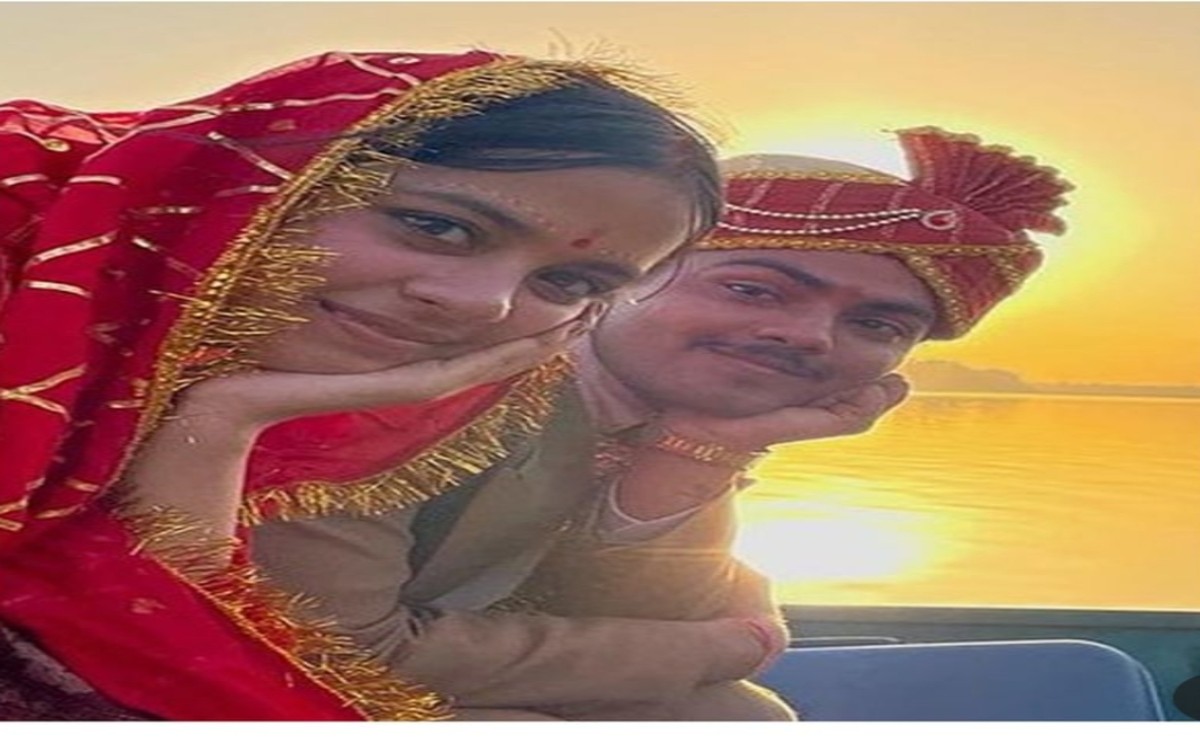
Laapataa Ladies
The Indian film industry is no stranger to global recognition, having earned accolades in international film festivals and prestigious award ceremonies. In recent years, movies from India have continued to break cultural boundaries, with films like Slumdog Millionaire and RRR making waves at the Academy Awards. Amidst this wave of global acclaim, another Indian film has emerged as a strong contender for the Oscars – Laapataa Ladies.
Directed by the celebrated filmmaker Kiran Rao, Laapataa Ladies has not only captured the hearts of the Indian audience but also caught the attention of international critics. With its unique storytelling, strong performances, and insightful social commentary, Laapataa Ladies has become a symbol of India’s evolving cinematic landscape.
This article will explore the journey of Laapataa Ladies from its inception to its possible road to the Oscars. We’ll delve into the film’s themes, the significance of its nomination, the competition it faces, and the broader implications for Indian cinema on the world stage.
Chapter 1: The Origins of Laapataa Ladies
Kiran Rao’s Vision
Kiran Rao is no stranger to pushing the boundaries of Indian cinema. Known for her critically acclaimed film Dhobi Ghat (2010), Rao has always had a knack for telling unconventional stories that challenge societal norms. Laapataa Ladies is another step in that direction.
The film, based on the short story “Two Missing Women,” revolves around two brides who disappear on a train journey shortly after their wedding. Set in rural India in the early 2000s, the story delves into the lives of these women and their families, exploring themes of gender, societal expectations, and identity.
Rao has been vocal about her desire to shed light on the lives of women from rural India, who often remain invisible in mainstream narratives. Through Laapataa Ladies, she offers a glimpse into their struggles, desires, and the constraints imposed upon them by society. The film’s subtle but powerful commentary on patriarchy and women’s agency is one of the reasons it resonated with both domestic and international audiences.
The Cast and Performances
A strong ensemble cast brings Laapataa Ladies to life, with the lead roles played by talented newcomers. Rao has a reputation for working with fresh faces, and this film is no exception. The actors’ raw and unpolished performances add an element of authenticity to the film, making it all the more relatable.
The portrayal of the two brides is both heart-wrenching and empowering. Their journey of self-discovery, set against the backdrop of a patriarchal society, is compelling and deeply moving. The supporting cast, including the families of the brides, adds layers of complexity to the narrative, offering a nuanced look at how societal expectations shape individual lives.
Chapter 2: The Film’s Themes and Social Commentary
Women’s Agency and Identity
At its core, Laapataa Ladies is a film about women’s agency and identity in a patriarchal society. The two protagonists, who find themselves lost both physically and metaphorically, represent the struggles of countless women in rural India who are often forced into roles dictated by tradition and social norms.
The film raises important questions about autonomy and self-identity. In a society where women’s choices are often restricted, the journey of these two brides becomes a powerful metaphor for reclaiming one’s agency. Their disappearance from the train can be seen as a symbolic escape from the confines of societal expectations, and their subsequent journey reflects the internal struggle to define themselves on their own terms.
The Intersection of Tradition and Modernity
Set in the early 2000s, Laapataa Ladies captures a period of transition in India, where traditional values often clashed with modern aspirations. The film skillfully portrays this tension through its characters and their interactions with the world around them. While the older generation clings to age-old customs, the younger generation is eager to embrace change.
This generational divide is most evident in the way the two brides navigate their new roles as wives. While they are expected to conform to traditional ideals of womanhood, their individual personalities and desires often conflict with these expectations. The film thus highlights the ongoing struggle between tradition and modernity, a theme that is relevant not only in India but across the world.
The Role of Men in a Patriarchal Society
While Laapataa Ladies focuses primarily on the experiences of women, it also offers a critique of the role of men in perpetuating patriarchy. The male characters in the film, from the husbands to the fathers, are often products of the same societal structures that oppress women. However, the film does not demonize them; instead, it portrays them as complex individuals who are also trapped by the expectations placed upon them.
In doing so, Laapataa Ladies challenges the notion of a binary gender struggle. It shows that both men and women are affected by patriarchal norms, and that true liberation can only be achieved when both genders work together to dismantle these structures.
Chapter 3: Critical Reception and International Acclaim
Domestic Reception
Upon its release in India, Laapataa Ladies received widespread critical acclaim. Critics praised the film for its bold storytelling, strong performances, and nuanced social commentary. Many noted that the film was a breath of fresh air in an industry often dominated by commercial blockbusters.
The film also struck a chord with audiences, particularly women, who saw their own struggles reflected in the characters on screen. Its success at the box office further cemented its place as one of the most important Indian films of recent years.
International Film Festivals
Laapataa Ladies made its international debut at the Cannes Film Festival, where it was met with standing ovations and rave reviews. The film was praised for its universal themes and its ability to resonate with audiences from different cultural backgrounds.
Following its success at Cannes, Laapataa Ladies went on to screen at several other prestigious film festivals, including the Toronto International Film Festival and the Venice Film Festival. At each stop, the film garnered more praise and accolades, solidifying its status as a frontrunner for international awards.
The Oscar Buzz
As the awards season approached, Laapataa Ladies quickly became one of the most talked-about films in the race for the Oscars. Its unique blend of Indian culture and universal themes made it a strong contender in the Best International Feature category.
Critics and industry insiders alike began speculating about the film’s chances at the Oscars. Many believed that the film had the potential to follow in the footsteps of RRR and Lagaan, both of which had previously earned nominations in the same category.
Chapter 4: The Road to the Oscars
India’s Official Entry
The process of selecting India’s official entry for the Oscars is often fraught with controversy, as the country produces a vast array of films each year. However, Laapataa Ladies emerged as the clear choice for 2024, thanks to its critical acclaim and international recognition.
The Film Federation of India, responsible for selecting the official entry, praised Laapataa Ladies for its “innovative storytelling and socially relevant themes.” The decision to send the film to the Oscars was widely celebrated by both the film industry and the general public.
Competition in the Best International Feature Category
While Laapataa Ladies is a strong contender, it faces stiff competition in the Best International Feature category. Films from countries like South Korea, Mexico, and France, all of which have a strong tradition of producing Oscar-winning films, are also in the running.
One of the most talked-about contenders is the South Korean film Parasite, which won the Palme d’Or at Cannes and has been hailed as a masterpiece of modern cinema. Similarly, the Mexican film Roma, directed by Alfonso Cuarón, has been gaining momentum after its success at the Venice Film Festival.
Despite the fierce competition, many believe that Laapataa Ladies has a unique edge. Its exploration of women’s issues, combined with its Indian cultural context, makes it stand out in a field dominated by films from Western countries.
The Campaign for the Oscars
Securing an Oscar nomination is no easy feat, and the team behind Laapataa Ladies has been working tirelessly to promote the film to Academy voters. The film’s producer, Aamir Khan, has been instrumental in spearheading the campaign, using his influence and connections in Hollywood to ensure that the film gets the attention it deserves.
The promotional campaign has included screenings for Academy members, interviews with the cast and crew, and a social media push to raise awareness about the film. In addition, the film’s international success has helped generate buzz, with many industry insiders predicting that it will make the final shortlist for the Best International Feature category.
Chapter 5: The Significance of Laapataa Ladies for Indian Cinema
A New Era for Indian Films
The success of Laapataa Ladies represents a new era for Indian cinema, one where films that challenge societal norms and offer unique perspectives are being celebrated on a global stage. In recent years, Indian filmmakers have increasingly moved away from the formulaic Bollywood blockbuster, opting instead for more nuanced and thought-provoking narratives.
This shift has not only been welcomed by Indian audiences but has also caught the attention of international critics and film festivals. Laapataa Ladies is a prime example of this new wave of Indian cinema, where filmmakers are unafraid to tackle difficult subjects and push the boundaries of storytelling.
The Role of Women in Indian Cinema
Another important aspect of Laapataa Ladies is its focus on women’s stories, a theme that has often been neglected in mainstream Indian cinema. The film’s success highlights the growing demand for more diverse and inclusive narratives, particularly those that center around women.
Kiran Rao’s work on Laapataa Ladies has been widely praised for its sensitivity





